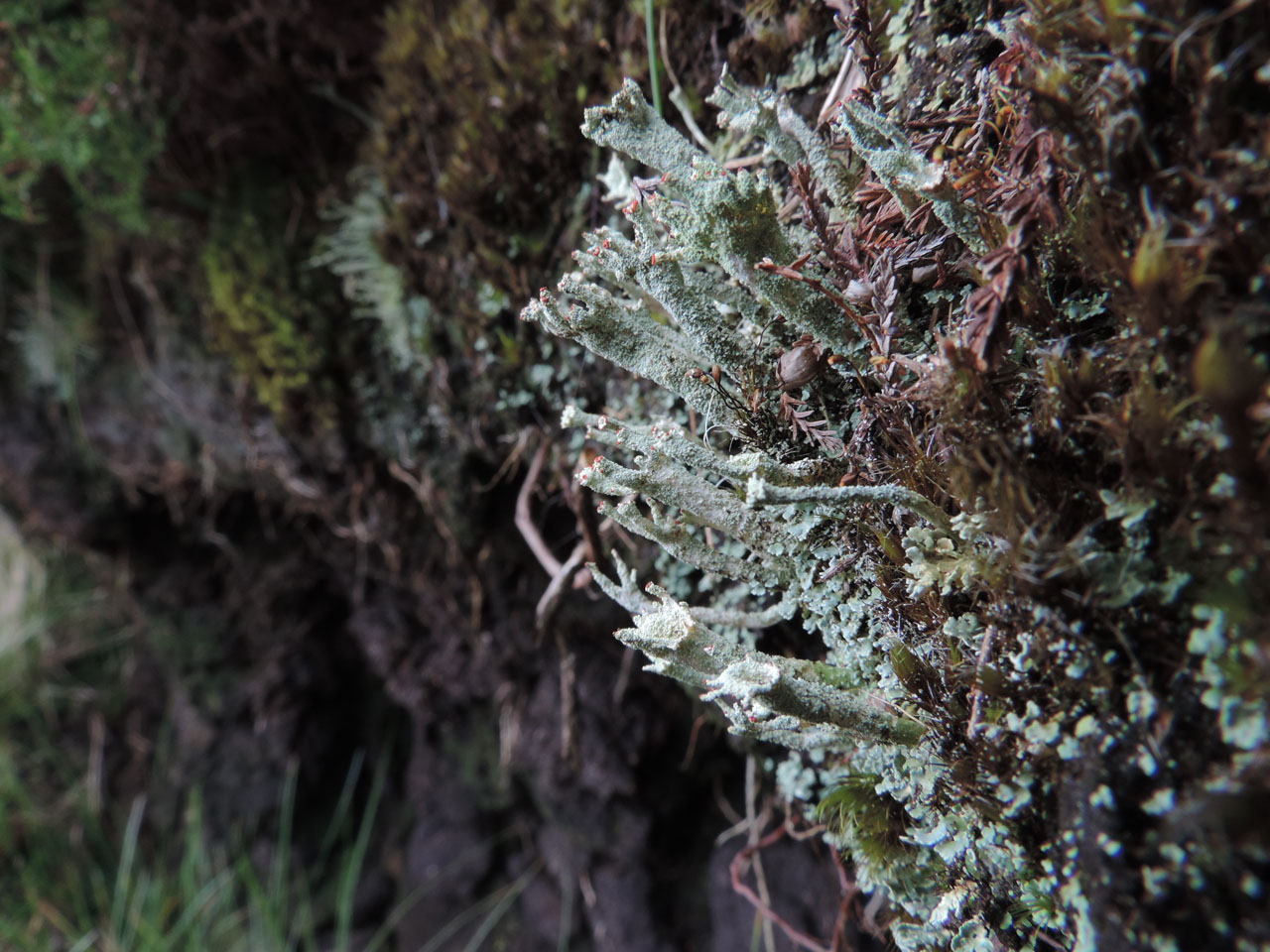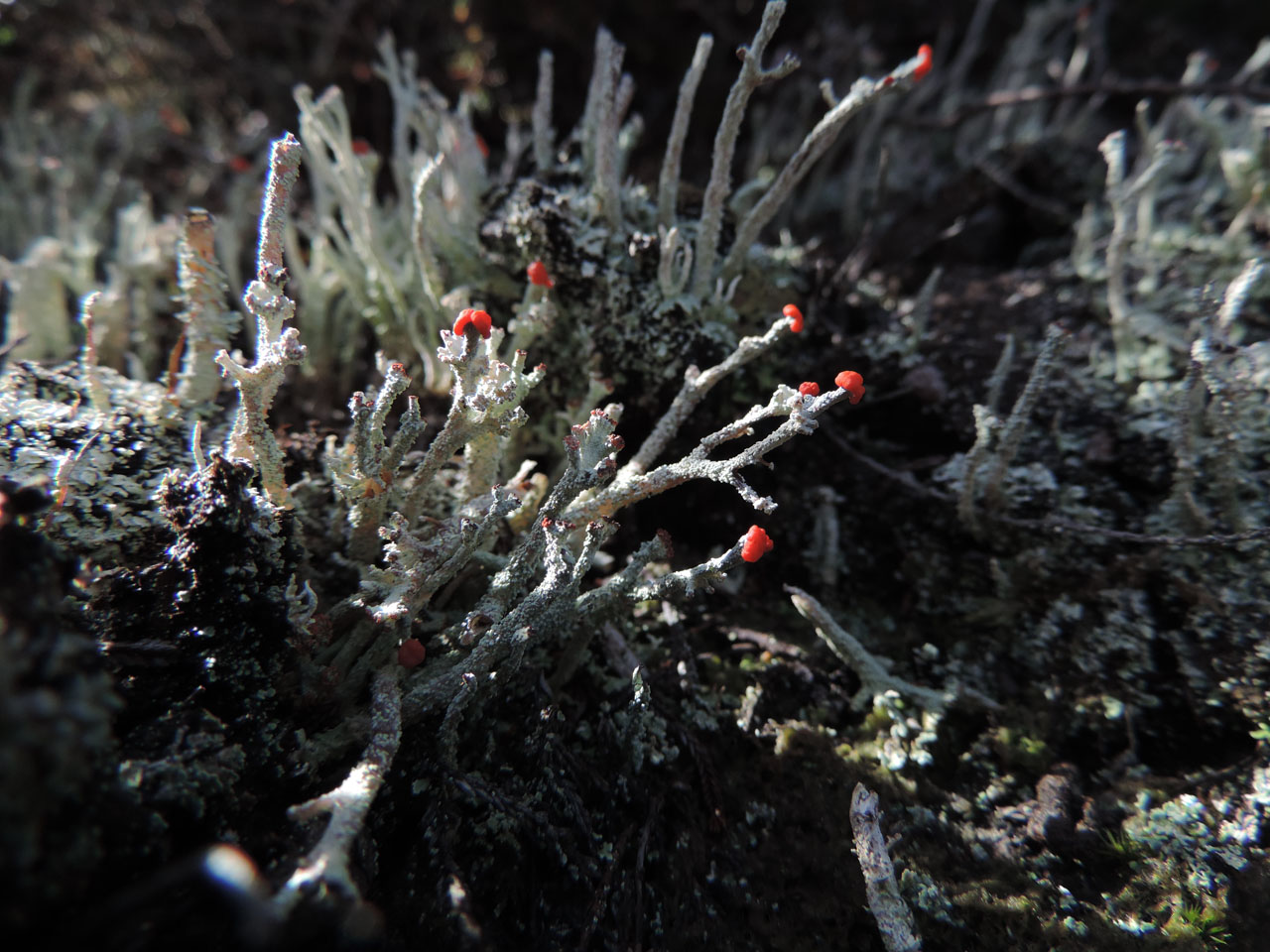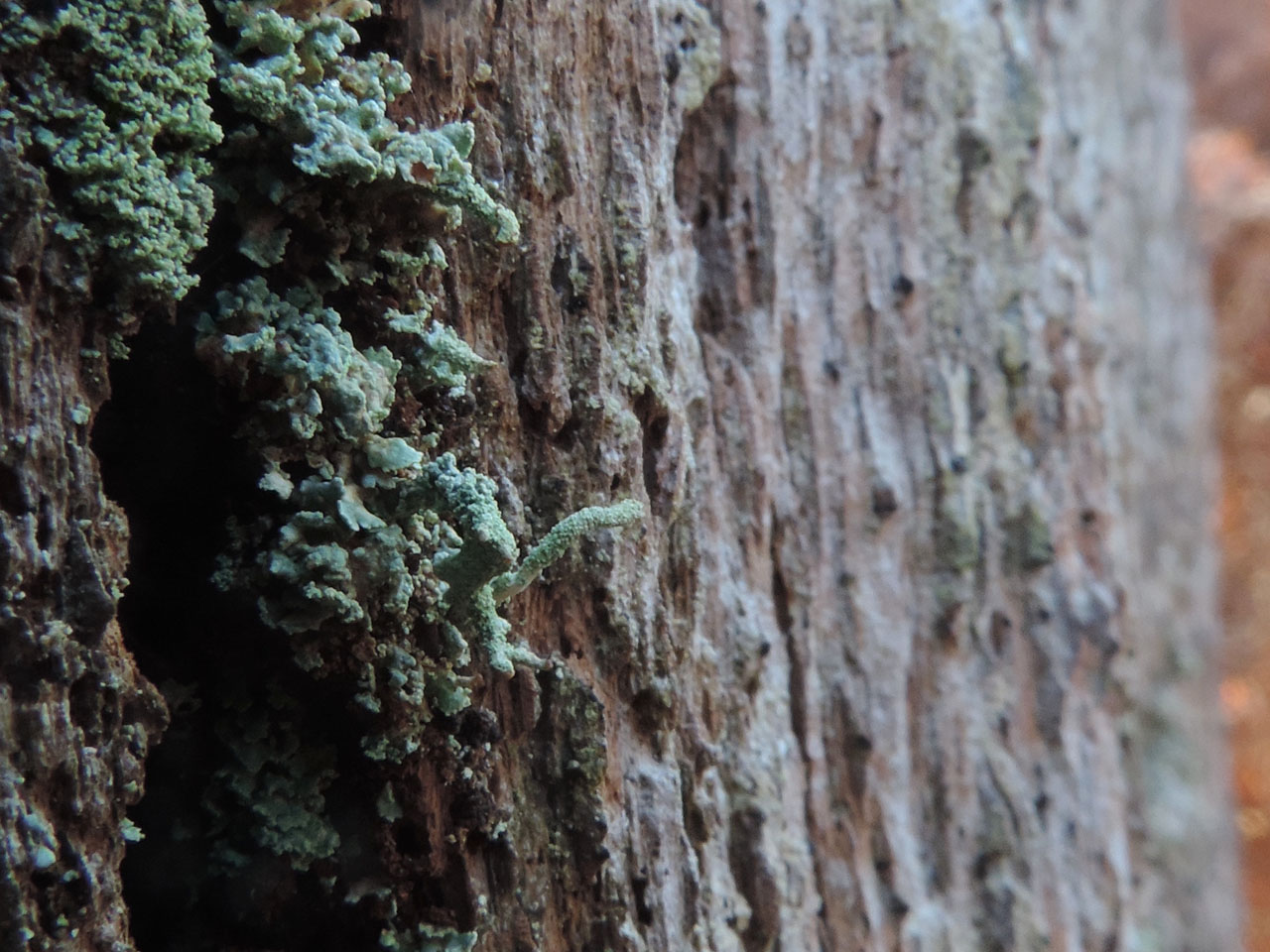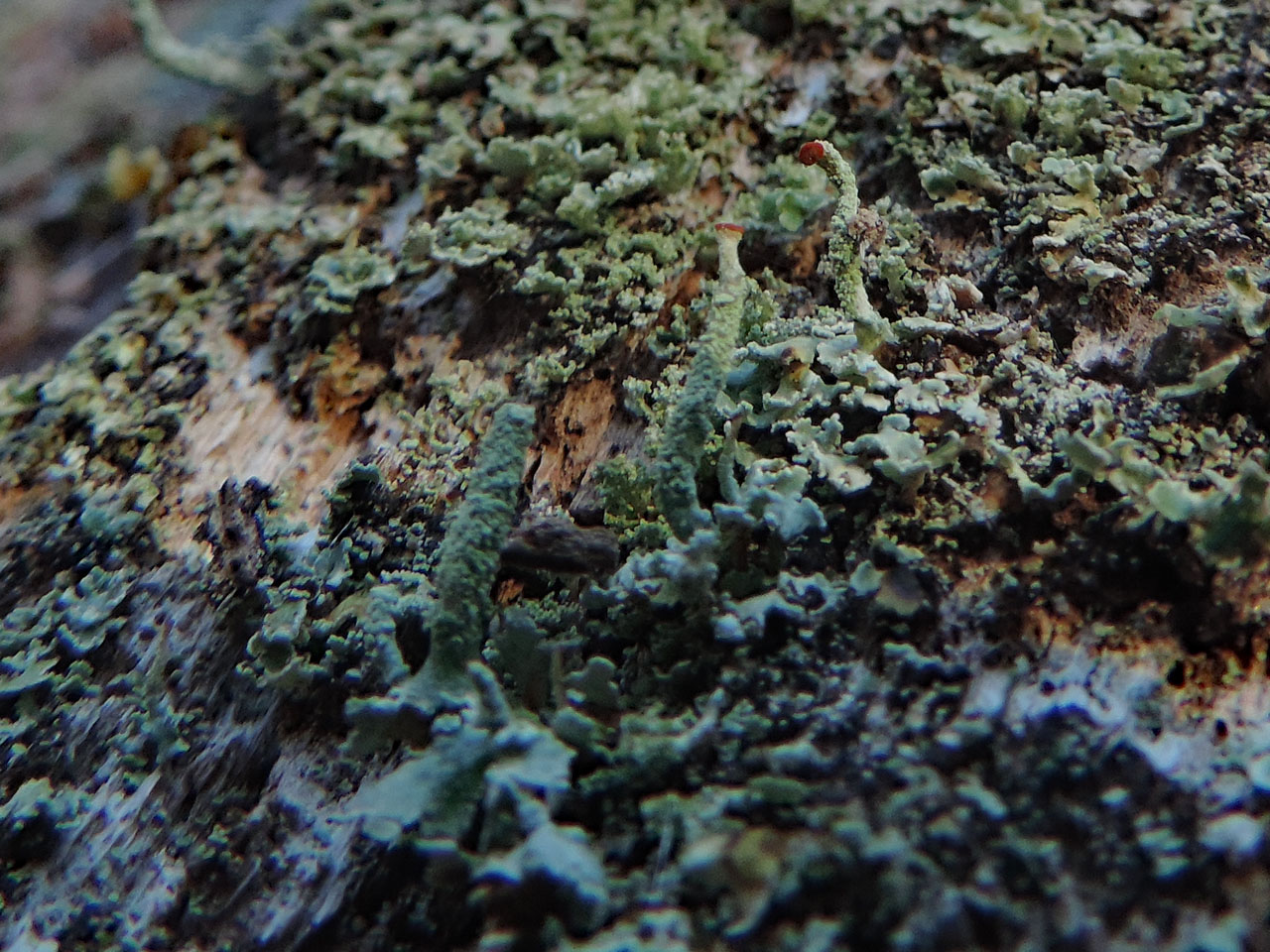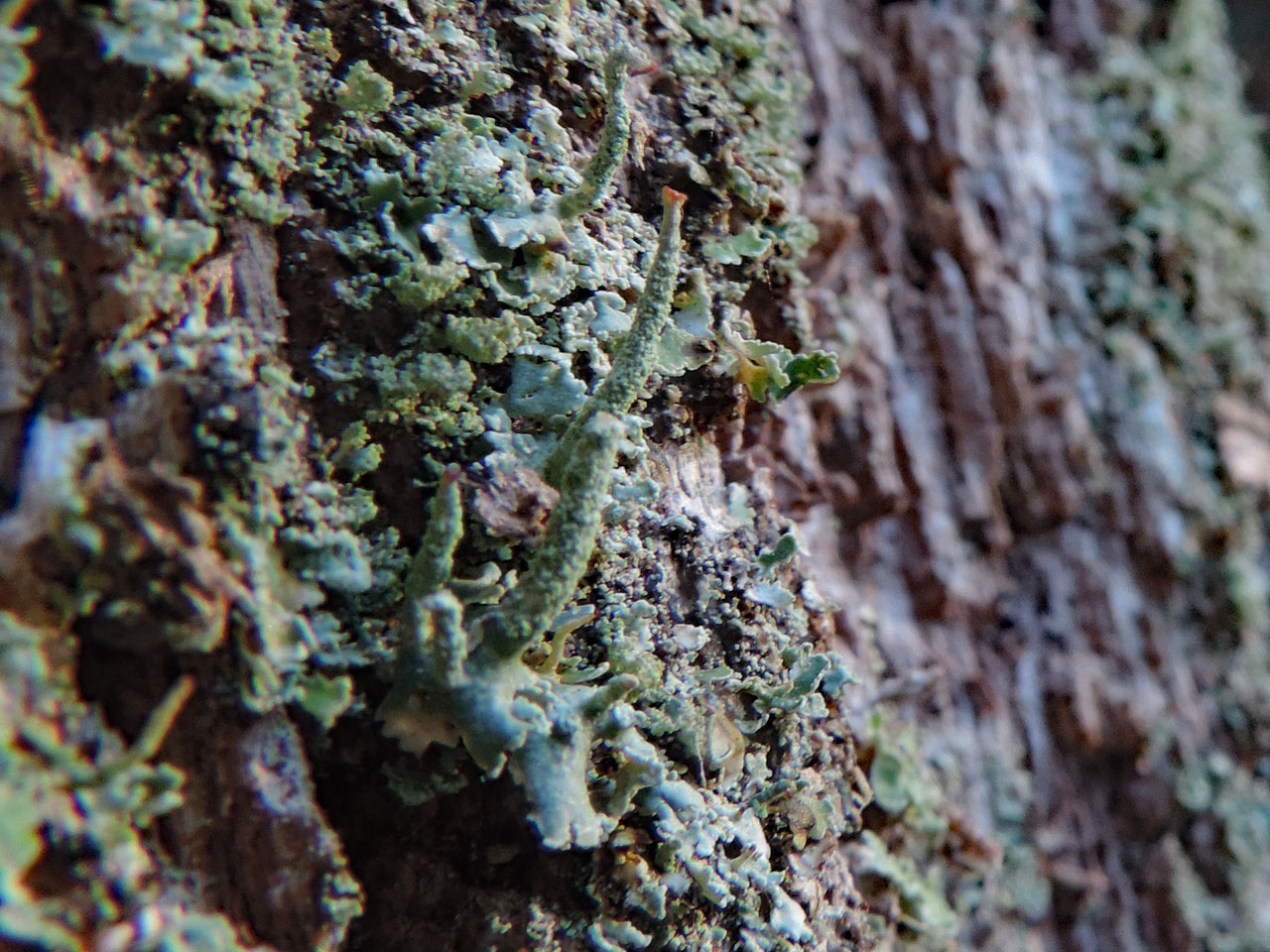Cladonia polydactyla
A small to medium sized Cladonia characterised by the blue-grey podetia colour, supporting narrow cups when mature, with coarsely granular-sorediate mixed with squamules and red apothecia and pycnidia. The K+ yellow spot test is characteristic. Widespread and often common on rotting wood, also on soil and amongst mosses, especially in damp of shaded habitats.
Podetia 1–2 (–3) cm tall, pale grey to whitish or greenish grey, usually with a bluish tinge, pointed at first, later with narrow, usually irregular, abruptly tapering cups (to 5 mm diam.), often variously proliferating from margins or remaining dentate, usually unbranched, occasionally sparingly branched near the apices, ± entirely mainly coarsely granular-sorediate and mixed with squamules which are particularly frequent near the base. Basal squamules small, incised, occasionally ± thinly sorediate below and often with orange pigmented (K+ purple) regions at base. Apothecia and pycnidia red, at apices of podetia, single or clustered, rather frequent. Thallus C–, K+ yellow-orange, KC–, Pd+ yellow, UV– (thamnolic acid).
Specimens that are young or from polluted sites lacking cups are very common; these can be separated from Cladonia macilenta (which always lacks cups) by the coarsely granular soredia of C. polydactyla as opposed to the farinose soredia of C. macilenta. C. macilenta has been much over-recorded for stunted C. polydactyla lacking cups; the latter is generally more widespread than true C. macilenta except in strongly acid habitats, especially heathland. In more shady or pollution-stressed sites, Cladonia polydactyla without cups often occurs with C. coniocraea when it may be identified by the coarse soredia and by its characteristic grey-blue colour (unchanged when wet) in contrast to the dark green colour of C. coniocraea (brighter green when wet), the latter is also K–.
Cladonia digitata, which may occur in similar habitats, has larger rounded squamules with conspicuously and densely sorediate lower surfaces.
Cladonia umbricola, treated by James (2009) as a variety of C. polydactyla, is Pd– and UV+ white (squamatic acid).
Widespread and often common on rotting wood, also on soil and amongst mosses, especially in damp of shaded habitats.

Throughout Britain and Ireland and frequent except in non-acid lowland areas.
Pino-Bodas, R., Sanderson, N., Cannon, P., Aptroot, A., Coppins, B., Orange, A. & Simkin, J. (2021). Lecanorales: Cladoniaceae, including the genera Cladonia, Pilophorus and Pycnothelia. Revisions of British and Irish Lichens 19: 1-45. Link
Text by Neil A Sanderson, based on Pino-Bodas et al (2021)
